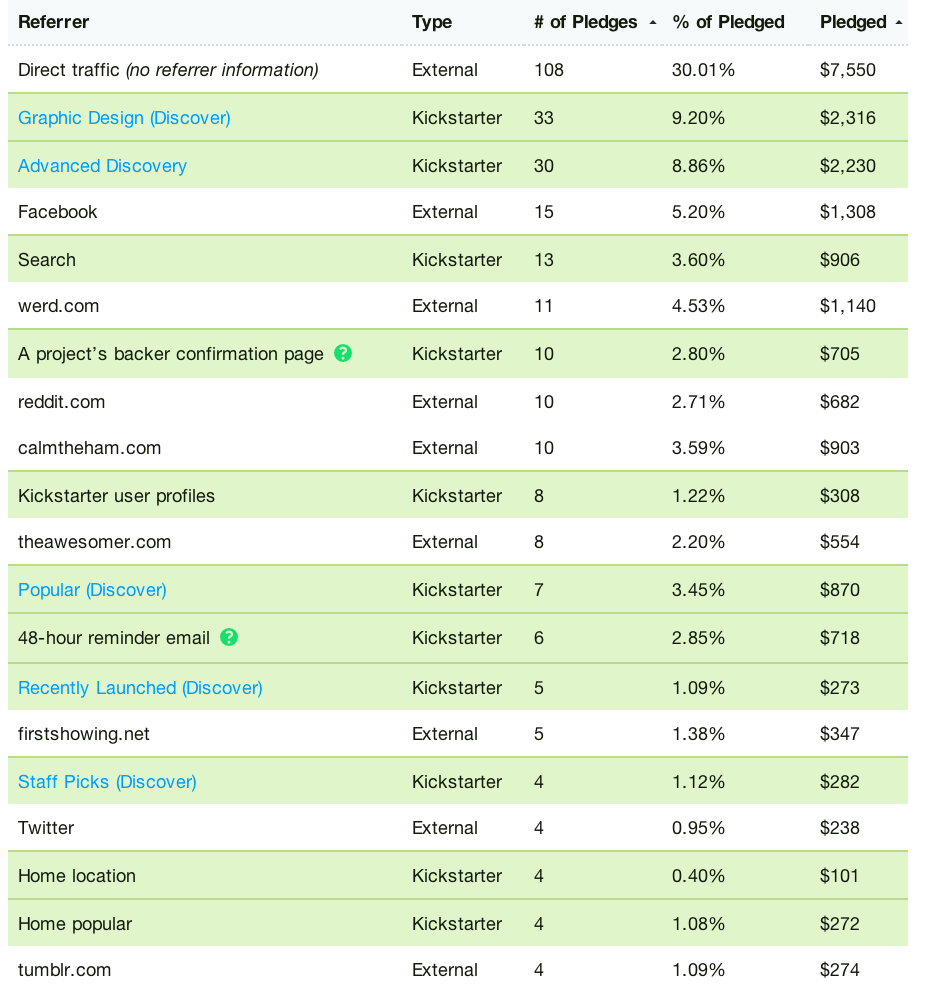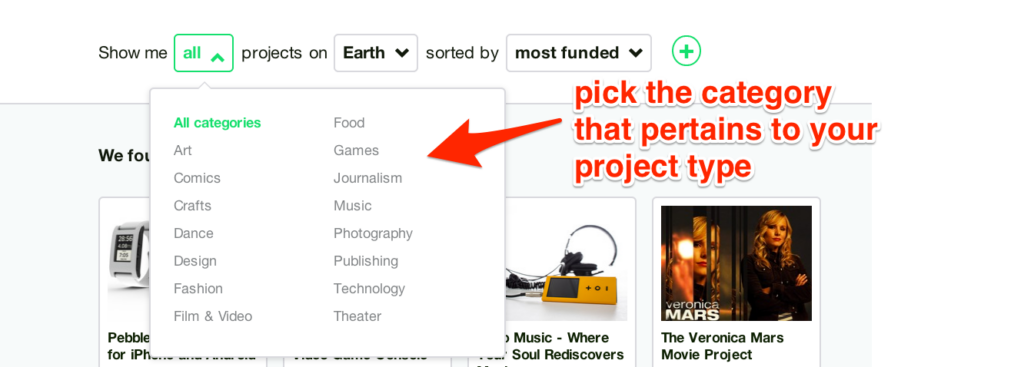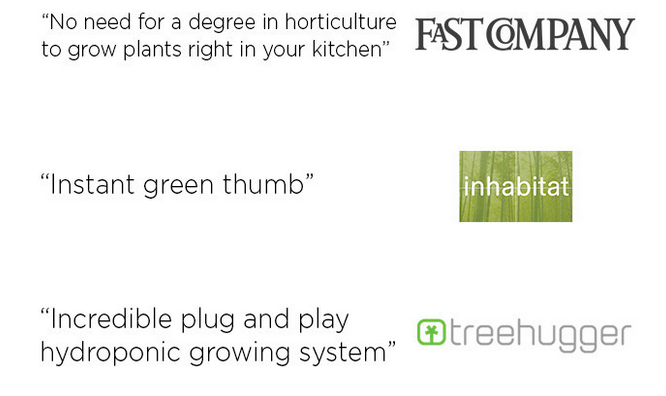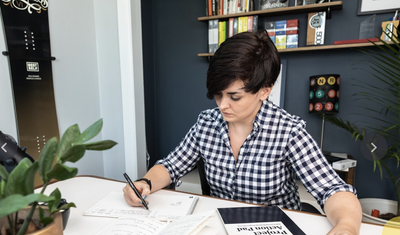
In March of this year, I attended Pioneer Nation, a conference for creative entrepreneurs hosted by Chris Guillebeau. I had been working on a new print for my store Calm The Ham titled The Filmography of Aircraft, which was a giant poster illustrating 100 years of aviation in film. It was a sequel to a previous print, The Filmography of Cars, which was a similar idea except with iconic cars from television and film.
After showing the print and original sketches to a fellow conferencegoer, Justin Thomas, he convinced me to launch my work through Kickstarter rather than the usual way of putting it up on my site and hoping people bought it.
I had been working on this print for months, so I was keen to get a campaign set up as soon as possible. I needed to sell this thing. I had to figure out the Minimum Effective Dose of input from myself to result in my desired outcome. Basically, what was the least I could do to get this thing funded?
By being organized, and creative, and spending some time researching the dos and don’ts of Kickstarter, I raised $25,161 over 30 days. Having accomplished my initial goal of $3,000 within 12 hours, I had 29 days to enjoy it without stressing. Now I want to share exactly how I did it.
How I got over 25k in 30 days… and how YOU can do it too.
The 3 key ingredients to a successful Kickstarter campaign:
- Professional assets
- Awesome (and deliverable) rewards
- Traffic!
1. Professional Assets
A good product is important. Unfortunately, I can’t tell you if your product is good. Let’s assume it is. Now we need to SHOW people how awesome it is. If you look at the trend in the most successfully funded projects out there, you see that they have professional assets: slick images and great video.
There are a lot of options these days for producing quality content without it incurring a lot of cost. For example, I shot my images personally and hired a person off TaskRabbit to do my video. I was launched on Kickstarter for less than $300.
…Yes that means a Kickass Video!
When I was first advised to try Kickstarter I wasn’t going to do a video. My first thought was that since my product was a poster print and there were no 3-dimensional features, I didn’t need a video. That would have been a HUGE mistake.
I got over myself and my fear of cameras because I knew this would be important for funding. It’s more than important; it’s critical! You should have a video regardless of your product medium.
Kickstarter has stated that projects without a video are 30% likely to be funded, while there is a 66% higher chance of being funded if you do have a video.
Make your product and yourself a commercial. People back projects on Kickstarter because they want to know the person behind the project, their personality, their story, and how the project was inspired. Every person that donates money is someone who believes in you.
2. Awesome (and deliverable) rewards
People back projects on Kickstarter to be involved in the process but also to get something cool out of the deal. It’s not a charity. Offer cool rewards to entice your audience, but ensure you price your rewards correctly. Figure out the profit margins ahead of time so that you don’t lose money later. Kickstarter states that the most popular pledge amount on the site is $25, so, understandably, most people want to have a $25 reward to appeal to the masses.
With that said, don’t try to squeeze yourself into this box if it doesn’t fit your project. If your main product is worth $300, then that’s probably the primary reward people will go for. My print was $45, so $45 was the primary reward people went for.
The Perfect Package
The easiest way to grow your Kickstarter revenue is to have the right pricing and packaging of rewards. You can see below that the poster reward alone raised $7,435 from a total of 160 backers; however, I raised $5,104 from only 20 backers in the highest reward, which was a framed version of 2 prints.
Having different packages allows people to pick what they want, and they usually aren’t scared to tell you if there’s something they want that you’re not offering. Pay attention, and make changes if possible.
For example, my $89 reward didn’t exist when I launched. It was created from backer feedback. By giving the people what they asked for I raised $3,875 in revenue from 41 backers.
Those pesky costs…
Consider all your costs, including manufacturing, production, packaging, shipping, and transaction fees. Plan ahead so that you can budget accordingly. I’ve created a resource for you to calculate your margins beforehand in this pricing calculator.

An example of how your price breakdown might look.
I personally wouldn’t price anything lower than a 40% profit margin. Things come up, especially when you get into retail and wholesale pricing. Don’t forget that you’ll personally be spending a lot of valuable time on this, and you should account for that.
3. Traffic!
Kickstarter itself is a great source of traffic. I was very happily surprised by just how engaged the community is. A large portion of backers came from within the referral traffic from Kickstarter alone. Here’s a little glimpse of behind-the-scenes.


I was fortunate to get some coverage from blogs in the 30 days of my campaign (Thrillist, The Awesomer, GearHungry, The Coolector, Werd, First Showing). Here are some ways I was able to get press without too much effort.
Create a media list by finding relevant websites using Google image search (use this media list template to stay organized)
Last year when I created the print The Filmography of Cars, I received a lot of blogs writing about it, so I started creating my media list from there. I took the main image of the car print, dragged and dropped it into images.google.com, and got a list of every website that ever posted about it.
I then had my virtual assistant add all these websites and contact information in my media list Excel document.
Now I know you may not have this option if this is your first product; however, this is where you can be innovative. If you look through the successful funded projects on Kickstarter and find projects that would share a similar audience, you can follow the same steps.

Take their main image, drop it into Google Images, and you’ll see a list of websites/blogs/publications that wrote about their project that may be very interested in yours as well.
Tim Ferris has an awesome post about getting media in his Hacking Kickstarter guide that is a huge help and everything you need to begin creating your media list. It also includes templates.
For every blogger I emailed, I wanted to ensure that I made it as easy as possible for them to write about me. I didn’t want to hassle them with a lot of back-and-forth emails that took up their time – and mine.
These people get pitched great ideas every day, so do yourself the favor, and make it easy for them. To do this I created a Dropbox folder with:
- All my product images (both high-res and low-res image sizes)
- A description of the product
- A little background information on the project
I’ve included the Kickstarter link in all of my emails. The less amount of work you make a blogger do, the better. With a good pitch and organized information and assets, it’s a much easier decision for them to talk up your project.
I’ve also offered a giveaway to their audience once the Kickstarter ends and the print is available in my store. It’s an incentive for them to write about me, but also a future opportunity for further press. I emailed only 10 bloggers, and 8 of them put out an article (that’s an 80% conversion rate) relating to me.
Here’s an example of one email I sent:

Now, can you imagine if I’d pitched more than just 8 bloggers?
3 Ways I Could Have Increased Funding
There’s a lot more I could have done with my Kickstarter campaign to increase funding; however, at the time I was overwhelmed with what I had on my plate already.
No excuses, though. For my next Kickstarter campaign (already in the works), I have some ideas on how to make it more fun for everyone involved. Here are just some of the ideas:
1. Collaborate and Conquer with Co-Marketing
A great way to reach a bigger audience is to look for other projects that share a similar audience and those that may complement yours. If there’s a way to partner up with them, then you can both benefit from each other’s audience.
Reach out and offer to share their project with your backers/followers if they will do the same in return. I recently backed this project (an iPhone USB charger) and in one of the later updates they sent me a link to Recoil; an automatic coil winder for wires. These products are complementary and applicable to each other’s audience.
Unfortunately for my campaign, I didn’t see a project that I felt aligned with my audience due to my niche product; however, I will definitely be on the lookout next time as well.
2. Content Creation
Another awesome way I could have driven further interaction with the campaign was to create some content around the product. I could have had an “Aircraft Fight of the Day” campaign, wherein every day I put two of the aircraft in the print against each other in a fun graphic, giving people a chance to vote “who’s better?” and promote it each day.
There would have been a grand winner by the end of the campaign, and it would have increased social interaction between myself and the backers.
I had the drawings already done. If I had spent a few hours making graphics, it would have been an easy way to create 30 days of content that drove social interaction and isn’t “SUPPORT ME” whining. (Thanks to Jonathan Nation for that idea. I’ll make you proud next time.)
3. Social Proof
As blogs write about your project, you should include either quotes or the logos of publications (or both) in the project description. This is social proof that other people believe in your project.
When someone comes onto your project page and sees the logo of a popular blog, it eases their mind. There’s a reason over 70% of Americans say they look at product reviews before making a purchase.
These blog logos are influencers with an established reputation. Anything they involve themselves with (in this case your Kickstarter project), is seen in a better light by association.

Great examples of using social proof, from Niwa.
Don’t forget to thank the blogs/publications that have written about you in your project updates – not only to be polite but to expose your existing backers to social proof. In sales, buyers can have a ‘buyer's remorse’ and wonder if they made the right choice.
Keeping them updated on the process and showing them websites that have followed and supported you, gives them a little peace of mind.
Keep your backers updated on the production timeline. I ensured that the two days before my campaign ended I had the prints back from the printers and could show my backers some progress.
Of course, this is not always possible; however, if there’s a way to show updates, it’s a great confidence builder.


Kickstarter sends out a 48-hour reminder email to everyone who asked to be notified. This is another great reason to show some progress.
By having pictures of the finished print and a timeline ( which can be a rough estimate), people will feel confident in pledging their money. Spending 30 minutes on an update is worth $718.
And that’s my story of how I did it.
I raised $25,161 after 30 days but only asked for $3,000. So where did it all go? Check out this post breaking down all my costs (and learn how much money I didn’t make)
Become a subscriber receive the latest updates in your inbox.





